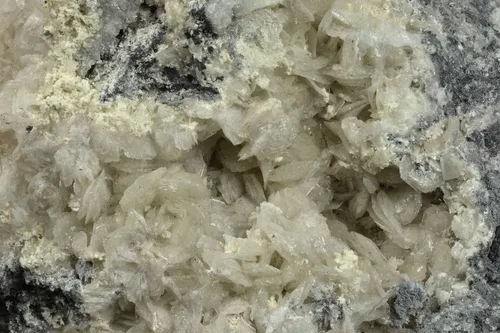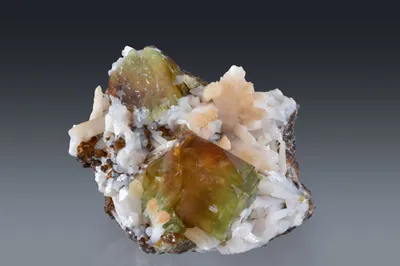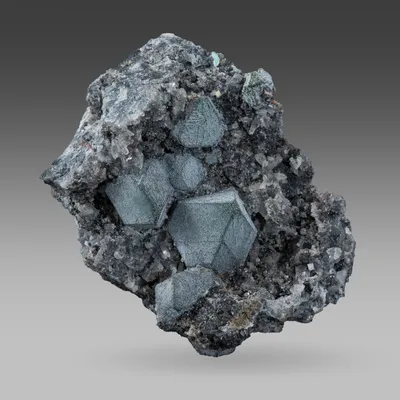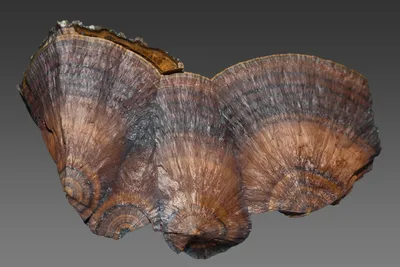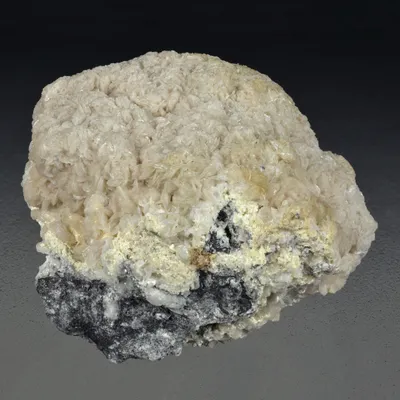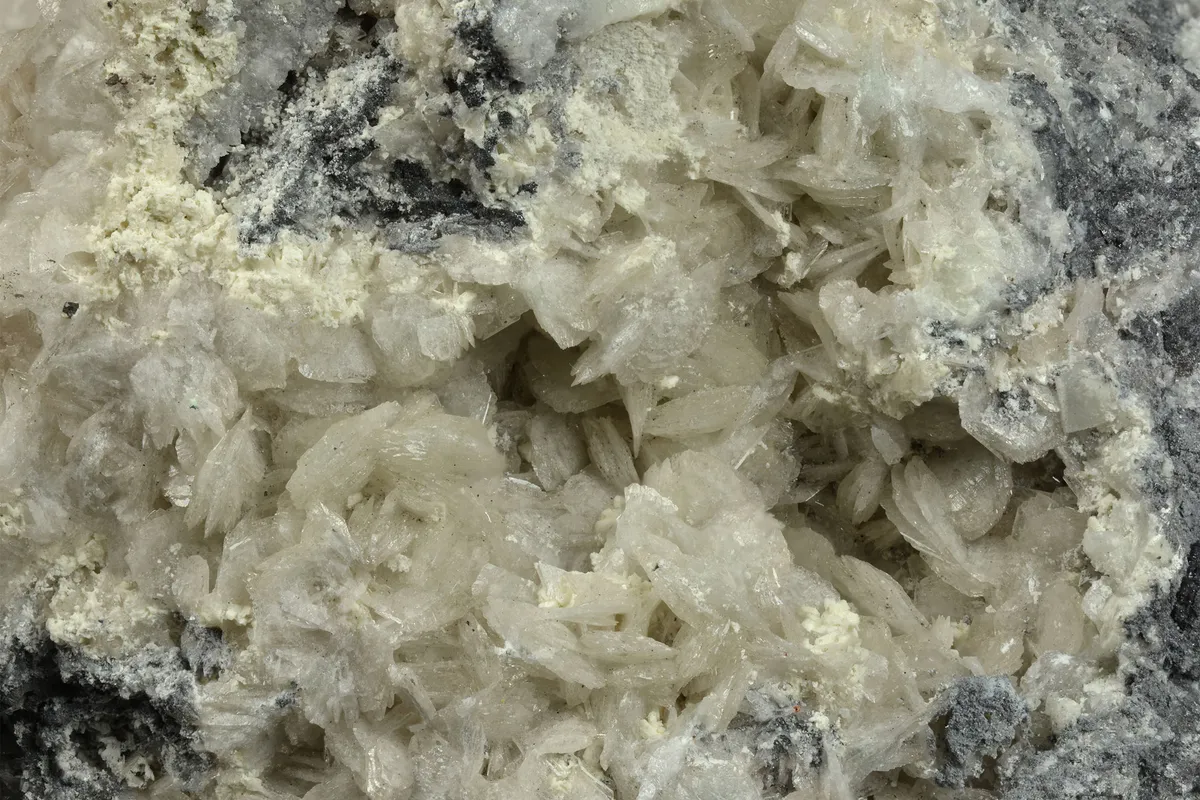
Image Credit: Bruce Cairncross
Mineral Species
Feinglosite
Type Locality
Yes
Composition
Pb2Zn(AsO4)(SO4)(OH)
Crystal System
Monoclinic
Status at Tsumeb
Confirmed (type locality)
Abundance
Extremely rare
Distribution
Second and third oxidation zones
Paragenesis
Supergene
Entry Number
Species; TSNB128
Type Mineralogy
A specimen of massive chalcocite acquired by Mark Feinglos in c. 1982 but collected in the 1970s from an unrecorded location in the mine, was left at the Natural History Museum, London in 1984 for determination of an unidentified mineral. Feinglosite, IMA 1995-013, is the zinc analogue of arsenbrackebuschite and is named for its discoverer Mark N. Feinglos who first recognised the mineral on a specimen in his collection (Clark et al. 1995). The type specimen is conserved at the Natural History Museum, London (catalogue number BM.1984,943).
General Notes
While the location from which the type specimen originated is unrecorded, it is almost certainly from the second oxidation zone (Mark Feinglos, pers. comm. to M. Southwood 2015). The type assemblage occurs in a 2 cm vug in massive chalcocite, with feinglosite forming pale olive-green radiating globular masses to 0.75 mm, usually with goethite cores and associated with anglesite and wulfenite (Clark et al. 1995).
At least three further finds of feinglosite have been made:
- Feinglosite has been found in association with anglesite, cerussite, wulfenite, and residual galena on material originally in the collection of John Innes, TCL mineralogist in the late 1970s and early 1980s (Mark Feinglos, pers. comm. to M. Southwood, 2012).
- Cream-coloured feinglosite with adamite, anglesite and mimetite. An example of this paragenesis is in the Feinglos Collection at Harvard University (MGMH 2022.4.10063L) and is accompanied by a Terry Seward label indicating that the specimen was collected by TCL mineralogist John Innes on 01 February 1980 from the North-East Stope on 35 Level.
- Feinglosite has been reported from the third oxidation zone in association with gypsum (Gebhard, 1999).
Associated Minerals
adamite; anglesite; cerussite; galena; goethite; gypsum; hydroxylpyromorphite; mimetite; senarmontite; wulfenite
